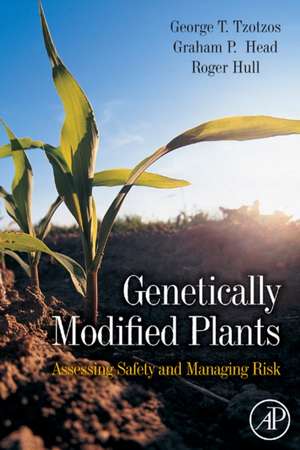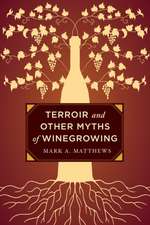Genetically Modified Plants: Assessing Safety and Managing Risk
Autor Roger Hull, George T. Tzotzos, Graham Headen Limba Engleză Hardback – 21 sep 2009
- Discusses traditional and future technology for genetic modification
- Compares conventional non-GM approaches and genetic modification
- Presents a risk assessment methodology for GM techniques
- Details mitigation techniques for human and environmental effects
Preț: 344.00 lei
Preț vechi: 471.83 lei
-27% Nou
Puncte Express: 516
Preț estimativ în valută:
65.83€ • 68.90$ • 54.79£
65.83€ • 68.90$ • 54.79£
Carte tipărită la comandă
Livrare economică 24 martie-07 aprilie
Preluare comenzi: 021 569.72.76
Specificații
ISBN-13: 9780123741066
ISBN-10: 0123741068
Pagini: 256
Dimensiuni: 152 x 229 x 16 mm
Greutate: 0.53 kg
Editura: ELSEVIER SCIENCE
Locul publicării:United Kingdom
ISBN-10: 0123741068
Pagini: 256
Dimensiuni: 152 x 229 x 16 mm
Greutate: 0.53 kg
Editura: ELSEVIER SCIENCE
Locul publicării:United Kingdom
Public țintă
plant scientists studying genetically modified crops; agricultural engineers; agronomists; researchers; industrialists; lawyers; students; regulatorsCuprins
Chapter 1. INTRODUCTIONConventional ApproachImprovementEffectsRisk Assessment MethodologiesTechnologyChapter 2. RISK SOURCE CHARACTERISATIONProperties of donor organism Properties of recipient organismDNASelectable MarkersChapter 3. EXPOSURE ASSESSMENTRelease sites PerformanceBiological Properties Impact on Human HealthImpact on AnimalsImpact on the EnvironmentCase StudiesChapter 4. RISK ASSESSMENT & RISK MANAGEMENT ? HUMAN HEALTHAllergiesUnintentional Toxins Resistance of Microbes to AntibioticsMitigation and Containment ApproachesCase StudiesChapter 5. RISK ASSESSMENT & RISK MANAGEMENT ? ENVIRONMENTAgricultural Environment Peri-agricultural and ?natural? environmentSpread of Transgenes to non-GM cropsGene Flow to Weeds and Feral Crop SpeciesImpact on Biodiversity of Crop Species and Wild Flora and Fauna Generation of ?Superweeds?Case StudiesStewardship ProceduresCo-existence of GM and non-GM cropsTesting for GM Modifying Agronomic PracticesChapter 6. REGULATORY SYSTEMSCurrent framework of GM regulation International Conventions and Agreements Major Regulatory SystemsMajor Sources of Information.Chapter 7 THE POLITICS OF GM TECHNOLOGYDevelopment of Regulation of GM CropsRisk Perception Understanding the Scientific ProcessBioethical Aspects Roles of NGOs, the media and industry. Chapter 8 THE FUTURE OF GM TECHNOLOGYThe Future of GM Products Technology Evolution of Regulatory Structures AppendicesFurther Reading ListUseful Internet Sites
Recenzii
"Overall, the authors have done a highly commendable job of compiling, organizing, and explaining in clear, unbiased language what is involved in getting a GM product through the current national and international regulatory schemes." --Professor Kent J. Bradford, Seed Biotechnology Center, University of California, Davis, CA, USA














